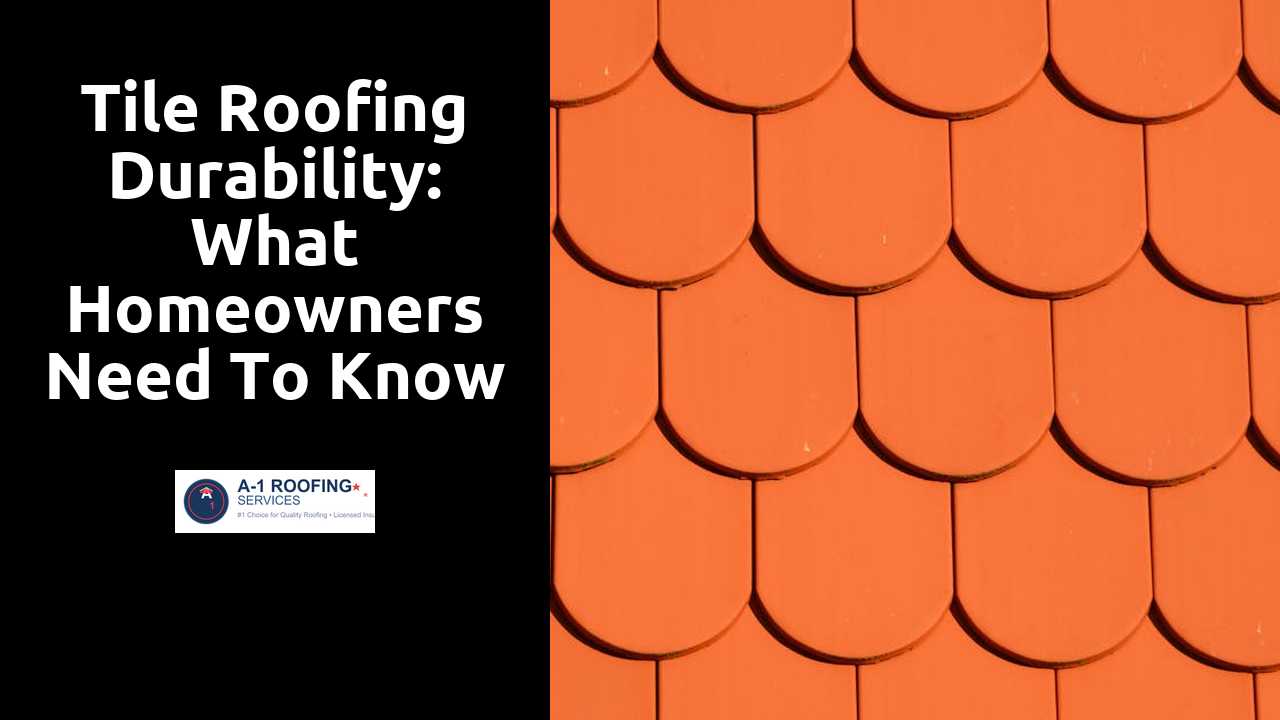
Tile Roofing Durability: What Homeowners Need to Know
Table Of Contents
Cost Considerations for Tile Roofing
Homeowners interested in tile roofing should be prepared for a higher initial investment compared to other roofing materials. The costs typically encompass not only the tiles themselves but also installation expenses, which can vary based on the complexity of the project and the roofing contractor's experience. Quality tile options, such as clay or concrete, usually come with price tags that reflect their durability and longevity. While the upfront costs may be steep, considering the lifespan of tile roofing can provide a clearer perspective on its overall value.
Long-term savings play a critical role in evaluating the cost-effectiveness of tile roofs. These roofs often require less frequent replacements and repairs than asphalt shingles or other materials, contributing to their appeal for budget-conscious homeowners. Additionally, tile roofs offer excellent energy efficiency, helping to reduce heating and cooling costs over time. Weighing these factors against the initial expenditure can lead to a more informed financial decision for prospective buyers.
Hop over here to discover more.
Installation and Material Expenses
Installing tile roofing can involve significant costs, primarily due to the materials and labor required. Tiles themselves can vary widely in price, influenced by factors such as type, color, and brand. Common materials include concrete and clay, with clay tiles usually commanding a higher price due to their durability and aesthetic appeal. Labor costs typically increase as well, because tile installation is a specialized skill. Roofers need expertise to ensure each tile is placed correctly to prevent leaks and maintain structural integrity.
In addition to the upfront expenses, long-term maintenance must also be considered. While tile roofs can be costly to install, they often have extended lifespans, sometimes exceeding 50 years with proper care. This longevity may offset the initial investment over time. Homeowners should also factor in potential repair costs should a tile crack or break, as replacement is crucial to maintaining the roof’s performance. Evaluating both installation and lifecycle expenses is vital for making informed decisions about tile roofing.
Comparing Tile Roofing to Other Roofing Options
Tile roofing stands out among various options mainly due to its longevity and resilience. While asphalt shingles may be cheaper upfront, they often require more frequent replacements and repairs. In contrast, a properly installed tile roof can last over fifty years, making it a cost-effective investment in the long run. Homeowners seeking energy efficiency will find that tile roofs naturally provide better insulation compared to traditional options, which can lead to lower energy costs.
When examining performance metrics, tile roofs also excel in areas such as fire resistance and adaptability to various climates. They can withstand extreme weather conditions like heavy snowfall and high winds, which can challenge materials like wood or asphalt. Additionally, tile roofing is less prone to issues like rotting or insect infestation, further enhancing its appeal as a durable roofing solution. Homeowners keen on aesthetics can benefit from the variety of styles and colors available, allowing them to achieve the desired look without sacrificing durability.
Performance Metrics
Tile roofing is widely recognized for its impressive longevity, often lasting over 50 years with proper maintenance. This durability stems from its resistance to extreme weather conditions, including high winds and hail. Additionally, tile roofs are less susceptible to issues like rot and insect damage, which can plague other roofing materials. They maintain their structural integrity over time, contributing to a lower overall cost of ownership compared to shorter-lived alternatives.
In terms of energy efficiency, tile roofing excels at regulating temperature. The thermal mass of tile helps to keep homes cooler in the summer and warmer in the winter, which can lead to lower energy bills. Furthermore, many tiles come equipped with reflective coatings that enhance their ability to deflect solar energy. These performance metrics not only benefit homeowners financially but also contribute to a more sustainable living environment, making tile roofing a compelling option for many.
Common Myths About Tile Roofing
Many homeowners believe tile roofing is excessively heavy and requires additional structural support. While it is true that tile can be heavier than other materials, most modern homes are designed to accommodate various roofing types without major reinforcements. Proper installation by professionals ensures that the existing structure can safely support the weight of tile roofing. This misconception often leads to unnecessary expenses and hesitance in choosing tile as a durable option.
Another common myth is that tile roofs are prone to cracking and breaking easily. Though tiles can be susceptible to damage from extreme impacts, high-quality tile roofing is engineered to withstand various weather conditions, including high winds and hail. Manufacturers often provide warranties that reflect the durability of their products. Homeowners can minimize risks by ensuring regular maintenance and inspections, further enhancing the longevity of their roofs.
Misconceptions Addressed
Many potential buyers believe that tile roofing is overly heavy for most homes, causing structural concerns. In reality, modern tile roofing systems are designed to be significantly lighter than traditional materials. Many new homes are engineered to accommodate various roofing materials, including tile, ensuring safety and stability. Homeowners often find that proper installation with adequate reinforcement addresses any weight-related worries.
Another common misconception suggests that tile roofing requires excessive maintenance and may not have long-lasting durability. In truth, tile roofs can endure harsh weather conditions, including high winds and heavy rains, often lasting anywhere from 50 to 100 years with minimal upkeep. Regular inspections and minor repairs, when needed, typically suffice to maintain these roofs' integrity, proving them to be a wise long-term investment.
Related Links
Advantages of Choosing Tile Roofing for Your HomeComparing Traditional and Modern Tile Roofing Options